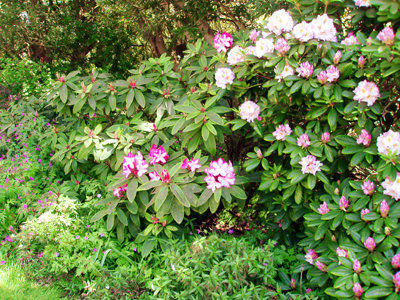With each new season, we start fresh with high expectations for a bountiful harvest of vegetables and mouth-watering fruit, fragrant flowers to pick for bouquets and healthy plants to attract beneficial insects to the garden. As the months pass, it seems one problem after another crops up.
Don’t get discouraged, though. Most any condition or disease can be corrected with the right information.
I get many emails from readers with some of the same problems you might have. Here are a few recent inquiries.
A drink from the hose?
One reader asked about the safety of her new hose. The label on the hose stated not to drink from it, and she wondered if it was safe to use it to water her organic vegetable garden.
Most of us grew up drinking water from the hose, and on a hot day, we still do. But is it safe?
A recent study by the Ecology Center — a nonprofit environmental organization based in Ann Arbor, Mich., that reviews consumer products — addressed potentially hazardous chemicals in gardening tools. The group tested nearly 200 gardening products, including hoses, and announced some disturbing findings.
To illustrate how chemicals can migrate from garden hoses into water, the research team left a section of garden hose filled with water out in the sun for several days. When the water was tested, it was found to exceed federal standards for safe drinking water for several chemicals, including four times the standard considered safe for phthalates, 18 times that for lead and 20 times that for BPA, an organic compound banned from baby bottles.
Most garden hoses that are sold are still made of PVC, which can leach unsafe levels of lead into water. There are safer options available, though. Food-grade, ether-based polyurethane or natural rubber hoses are a better choice. Look for hoses with nickel or chrome-plated fittings, because brass can also leach lead into water.
Plants don’t generally absorb lead, unless there is a high concentration of it in the soil, but who wants to take a chance?
With any hose, even one labeled “drink-safe,” let the water run until it’s cold before you drink from it, because bacteria can grow in warm standing water.
Yellow leaves on lemon trees
Another reader asked what she should do for her Meyer lemon, which had yellow leaves.
I told her that the yellowing was due to insufficient nutrients. First, apply a fertilizer containing nitrogen. There is also a chance that iron, sulfur and magnesium could be in short supply. Look for these ingredients on fertilizer bags and apply as directed.
Also, don’t overwater citrus. Let the plant dry 2 inches below the soil surface between deep waterings.
Lawn wisdom
Lawns also need deep watering to train roots to grow deeply. When to water? One easy method is to walk on the lawn and then check it an hour after stepping on it. If it hasn’t rebounded, the lawn needs water.
It’s best to leave grass clippings to decompose after mowing. You’ll need to mow about once a week so the clippings are short and can decompose quickly.
For happy rhododendrons
When everyone’s rhododendrons but yours are blooming, what can you do? This plant sets flower and leaf buds in late August or September, so fertilizing regularly for the next few months is important.
Also, water deeply when the soil is dry 1 to 2 inches deep, and mulch the soil around your plant to keep the roots cool and moist.
Rhododendrons and azaleas are shallow rooted, so don’t work up the soil underneath.
Feel free to email your questions to me. I’m happy to help.
– Jan Nelson, a landscape designer and California certified nursery professional, will answer questions about gardening in the Santa Cruz Mountains. Email her at ja******@*ol.com, or visit www.jannelsonlandscapedesign.com to view past columns and pictures.












